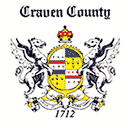Scout for Bagworm Bags Now
go.ncsu.edu/readext?782650
en Español / em Português
El inglés es el idioma de control de esta página. En la medida en que haya algún conflicto entre la traducción al inglés y la traducción, el inglés prevalece.
Al hacer clic en el enlace de traducción se activa un servicio de traducción gratuito para convertir la página al español. Al igual que con cualquier traducción por Internet, la conversión no es sensible al contexto y puede que no traduzca el texto en su significado original. NC State Extension no garantiza la exactitud del texto traducido. Por favor, tenga en cuenta que algunas aplicaciones y/o servicios pueden no funcionar como se espera cuando se traducen.
Português
Inglês é o idioma de controle desta página. Na medida que haja algum conflito entre o texto original em Inglês e a tradução, o Inglês prevalece.
Ao clicar no link de tradução, um serviço gratuito de tradução será ativado para converter a página para o Português. Como em qualquer tradução pela internet, a conversão não é sensivel ao contexto e pode não ocorrer a tradução para o significado orginal. O serviço de Extensão da Carolina do Norte (NC State Extension) não garante a exatidão do texto traduzido. Por favor, observe que algumas funções ou serviços podem não funcionar como esperado após a tradução.
English
English is the controlling language of this page. To the extent there is any conflict between the English text and the translation, English controls.
Clicking on the translation link activates a free translation service to convert the page to Spanish. As with any Internet translation, the conversion is not context-sensitive and may not translate the text to its original meaning. NC State Extension does not guarantee the accuracy of the translated text. Please note that some applications and/or services may not function as expected when translated.
Collapse ▲Protective bag of a bagworm (Thyridopteryx ephemeraeformis) on a baldcypress twig, late February 2020. Scout for these bags in the landscape now, before the new generation emerges in the spring. The bag in this image was formed in 2019, by either a male or female. Female bags may contain between 500 and 1,000 eggs for the new year, so removal is an important landscape task. Use a sharp knife, razor blade, or scissors to snip and unwind the silk band that attaches the bag to the twig; otherwise, the twig can become girdled, resulting in dieback beyond the attachment. See Bagworms in Ornamental Landscapes for biology and management of this common insect pest.





